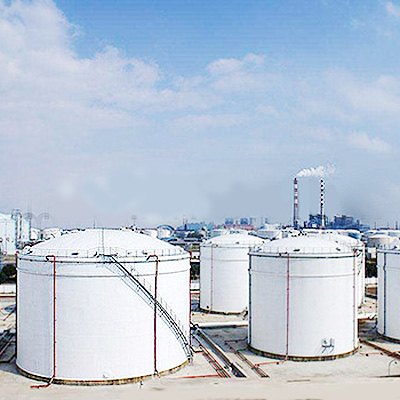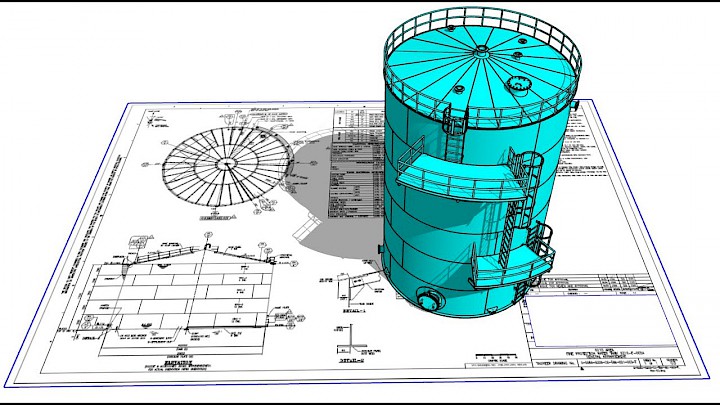The Connection Between API 650 Welding Inspection and Long-Term Equipment Operation
A Step-by-Step Appearance at the Setup Refine of Welding Evaluation Techniques
Welding evaluation is an important process that assures structural stability and safety and security. The setup of inspection methods entails a number of methodical steps, each important to accomplishing trusted results. From preparation and tool choice to performing visual and non-destructive examinations, each stage demands cautious focus. Recognizing these procedures can substantially enhance high quality guarantee in welding projects. What challenges emerge in implementing these techniques, and just how can they be efficiently resolved?
Understanding the Significance of Welding Examination
Welding examination is an essential component of making sure architectural honesty and safety and security in construction and manufacturing processes. This method includes evaluating welded joints for flaws, making certain that they meet specific standards and policies. By systematically evaluating weld high quality, examiners can determine concerns such as splits, gaps, and insufficient combination, which can jeopardize the stamina and longevity of frameworks.
The value of welding examination extends beyond immediate security problems; it assists protect against costly failings and possible threats in the lengthy term. Efficient evaluation techniques foster compliance with sector standards, consequently boosting the general integrity of welded elements. On top of that, a durable evaluation procedure adds to preserving the credibility of manufacturers and contractors, as it ensures customers of the top quality of their projects. Inevitably, comprehending the significance of welding examination is vital for advertising safe construction techniques and making sure the longevity of important framework and products.
Picking the Right Equipment for Examination
When choosing the ideal tools for assessment, it is vital to ponder the particular requirements of the welding process and the products entailed. Different examination techniques, such as visual, ultrasonic, and radiographic testing, require distinctive tools tailored to their one-of-a-kind demands. For visual examinations, tools like magnifying calipers and glasses are vital for reviewing weld quality. Ultrasonic testing requires specific tools efficient in transmitting and getting acoustic waves to find internal flaws. Radiographic testing, on the other hand, uses X-ray or gamma-ray sources together with delicate movie or digital detectors to disclose variances.
In addition, individual safety tools (PPE) is important to ensure the safety and security of assessors throughout analyses. Picking the right tools not just enhances the accuracy of evaluations however additionally adds to the total honesty and safety and security of the welding job. Subsequently, an extensive understanding of offered tools and their applications is necessary for efficient welding examination.
Getting ready for the Evaluation Process
Prior to starting the inspection process, it is necessary to develop a complete plan that lays out the extent and goals of the assessment. This strategy must consist of details requirements that define what comprises acceptable top quality in the welding work being inspected. Recognizing the appropriate codes and standards is crucial, as they will guide the examination requirements and methodologies.
Furthermore, workers included in the assessment needs to be effectively educated and accredited in welding assessment techniques to assure dependability and accuracy. A list can be useful in arranging the various aspects of the examination, ranging from equipment preparedness to ecological conditions that can affect the evaluation.

Logistical considerations such as organizing, available resources, and communication between team members must be resolved. By preparing systematically, inspectors can enhance the effectiveness of the evaluation and make sure that all crucial elements are appropriately thought about prior to waging the examination itself.
Performing Aesthetic Examinations

Conducting aesthetic assessments is a vital action in the welding assessment process, requiring cautious preparation to assure reliable examination. Inspectors have to be familiar with key issue indications that can indicate possible problems in weld top quality. By concentrating on these facets, one can enhance the overall integrity of the evaluation end results.
Preparing for Visual Examination
Visual examination works as a critical initial step in the welding examination process, assuring that any prospective defects are recognized early (API 650 Welding Inspection). Proper preparation is crucial for effective aesthetic inspection. Assessors must begin by assessing pertinent documentation, consisting of welding procedures and specifications, to recognize the job needs. They should collect necessary tools, such as amplifying glasses, flashlights, and ideal personal protective devices (PPE) A complete exam of the inspection location is critical; assessors ought to confirm it is complimentary and tidy of blockages. In addition, it is very important to establish excellent illumination problems to boost presence of welds. By taking these primary steps, inspectors can produce an environment favorable to determining discrepancies and guaranteeing the honesty of the bonded frameworks
Trick Problem Indicators
A complete understanding of essential flaw indications is crucial during aesthetic examinations to assure the top quality and safety and security of bonded joints. Examiners must concentrate on particular indicators such as cracks, porosity, damages, and insufficient blend. Splits might appear as sharp lines and can compromise structural stability. Porosity manifests as small openings that can compromise weld toughness. Undercuts, which are grooves along the weld side, can cause anxiety concentration. Incomplete fusion suggests that the weld metal did not properly bond with the base product, leading to a weak joint. By systematically determining these flaws, examiners can determine compliance with market requirements and improve the general integrity of bonded frameworks, eventually adding to much safer functional problems.
Executing Non-Destructive Evaluating Strategies

Many non-destructive testing (NDT) strategies are essential to assuring the stability of bonded structures without compromising their capability. These techniques permit inspectors to review weld top quality and detect flaws without causing damage to the products being evaluated. Common NDT strategies include ultrasonic screening, radiographic screening, magnetic particle screening, and dye penetrant screening. Each technique offers a specific function, addressing different sorts of flaws such as fractures, porosity, or insufficient blend.
Executing NDT techniques needs a systematic method, starting with picking the suitable approach based upon the materials and the nature of the weld. Training workers in these strategies is important for accurate results. In addition, developing clear treatments and standards guarantees uniformity throughout the evaluation procedure. By integrating NDT right into the welding evaluation operations, companies can enhance the integrity of their products while lessening possible threats connected with architectural failings. This positive technique eventually adds to keeping safety and security and top quality criteria in welded constructions.
Evaluating and documenting Assessment Results
Efficient documentation and analysis of inspection outcomes are important components of the welding inspection you can check here process. Exact documents of assessment searchings for function as a recommendation for quality control and conformity with sector criteria. API 650 Welding Inspection. Assessors must use structured kinds or electronic systems to log details such as the sort of weld, evaluation approaches utilized, and any type of discrepancies recognized during the assessment
As soon as data is collected, comprehensive evaluation is crucial. This includes comparing results versus established standards to determine fads or repeating concerns. Statistical devices may be used to evaluate issues and examine their influence Get More Info on general weld quality.
Efficient interaction of findings to appropriate stakeholders is important. Reports and summaries need to be clear and concise, highlighting key understandings and referrals for rehabilitative activities. By methodically recording and assessing evaluation outcomes, companies can foster continual improvement in welding techniques and improve item honesty.
Frequently Asked Concerns
What Certifications Are Needed to Come To Be a Welding Inspector?
To end up being a welding examiner, one commonly needs pertinent qualifications such as AWS CWI, together with experience in welding practices, understanding of welding codes, and proficiency in evaluation techniques to guarantee high quality and safety requirements.
Exactly How Typically Should Welding Inspections Be Conducted?
Welding evaluations need to be carried out routinely, typically after each weld is finished, and periodically during projects. More hints Variables such as project complexity, market requirements, and regulative demands can influence the frequency of these inspections.
What Is the Cost of Welding Evaluation Providers?
The price of welding examination services varies significantly based on aspects such as job intricacy, location, and size. Commonly, costs vary from $100 to $150 per hour, with additional fees for specialized screening and accreditations.
Exist Certifications for Welding Inspectors?
Yes, there are various certifications for welding inspectors, consisting of those supplied by the American Welding Society (AWS) and the International Institute of Welding (IIW) These qualifications ensure examiners have the essential skills and knowledge for effective assessments.

Just how Do I Pick an Assessment Company?
To select an examination service supplier, one must examine credentials, experience, industry online reputation, and consumer testimonials. In addition, contrasting solution offerings and prices can aid assure the selected company fulfills particular task requires properly.
Furthermore, employees involved in the examination should be properly educated and certified in welding examination methods to guarantee dependability and precision. Conducting aesthetic evaluations is a necessary step in the welding inspection procedure, needing mindful prep work to guarantee efficient evaluation. Aesthetic inspection serves as a vital very first step in the welding evaluation procedure, ensuring that any type of possible issues are identified early. Efficient documentation and evaluation of evaluation results are crucial parts of the welding examination procedure. Welding examinations need to be performed routinely, commonly after each weld is completed, and regularly throughout projects.